Secret spaces: Iñaki Bonillas’ exhibition in the hidden nooks of Casa Luis Barragán
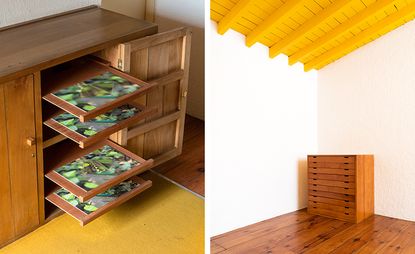
When Iñaki Bonillas was first invited to intervene on Mexico City’s Casa Luis Barragán by Hans Ulrich Obrist, as part of the Swiss curator’s acclaimed 2003 exhibition 'The Air is Blue', the Mexican artist was not allowed to alter the house in any way. So instead, Bonillas decided to hang a photo (on a pre-existing nail in Barragán’s famous pink foyer) of an empty blackboard that he'd happened upon in a local school with colourful walls, whose tonality and silence mimicked the vibrant solitude of the carefully curated plant selection in and around the home.
'At that time, when I was sneaking around the house, I [was] pretty impressed to discover all the places you can find places to hide things,' says Bonillas. 'It was curious in this type of architecture, where everything that is visible makes a very precise sense. You need a second house where everything that doesn’t make sense goes to find its place.'
Since that time, Bonillas was thinking about how he could make an exhibition in the negative spaces of the house and studio the Mexican modernist built for himself in 1948. So when curator Eugenia Braniff offered Bonillas the second slot in a two-year installation program at the Barragán house – the first was an exhibition of works from the collection of Estancia FEMSA, which is sponsoring the program and updating the house with each project – he jumped at the chance.
After two years of intense research, Bonillas, whose work often focuses on photo archives, has emerged with 'Secretos', a multi-room conceptual spelunking expedition into every nook and cranny – or secrete place – of Barragán’s live-work spaces.
'One of the things that’s curious about Barragán is that he has many reproductions of artworks, especially Josef Albers. He could have bought an original but he preferred to buy a piece of cloth from Marimekko because the scale fit more properly to his desires,' says Bonillas, pointing to one of the few original works in the house: a gold leafed Mathias Goeritz panel. As such, Bonillas has taken it upon himself to reproduce various historical art works, repurpose objects and contemporary pieces, and make new photo abstractions and embed them into the cubbies, cabinets and curios throughout the house.
In a closet off the foyer, Bonillas installed a black box with a version of Hans Haacke’s Condensation Cube scaled to mimic the size of the Barragán-designed canvas lampshades throughout the house. Meanwhile, the neighbouring cabinet contains photographic inserts that invoke Man Ray’s The Starfish (with the lifelines of the furniture repairman’s hands painted pink) and Duchamp’s alter ego Rrose Sélavy (or in this case, Rose, to match the walls and the 'cancelled eroticism' that pervade the home).
'This house is about layers and layers and layers of information; you enter one room and have no clue what the other is going to have in it,' says Bonillas, leading us the the library where he hides a series of photograms (inside the chest of drawers, inside a closet) made from objects lying around the house. He made another series of soft-focus photos in the backyard taken through the mirrored prism of a fake John McCracken (tucked in some draws in the study) as well as granular studies of the deep Albers-esque geometric abstractions in the shag carpets that remain when the furniture is removed in the yellow-walled studio. You’ll also find a nod to Marcel Broodthaers' mussels sculptures (complimenting the stoneware plates in the breakfast room) or David Bowie’s Lazarus video playing through a peephole in Barragán’s personal wardrobe overlooking a shrine to his wife, Iman. (She stayed at the house, against the Starman’s wishes, and was said to be one of Barragán’s muses.)
To tie everything up, Bonillas has installed Nocturnal Writing – a series of photo engravings on the wall facing the window in Barragán’s studio. Made by rubbing images from his grandfather’s photo archive (trapped inside plastic) onto the photo paper, they are also a reference to a secret silent language invented by Charles Barbier during the Napoleonic wars. Says Bonillas, 'It’s all about two surfaces coming together.'
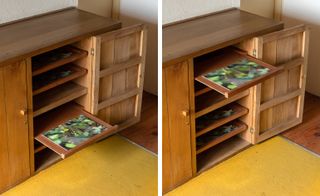
After two years of intense research, Bonillas has emerged with ’Secretos’, a multi-room conceptual expedition into every nook and cranny of Barragán’s live-work spaces. Pictured: Jardín (series), 2016
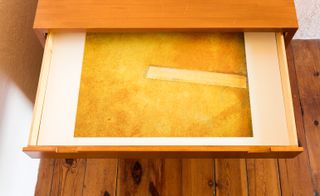
’This house is about layers and layers and layers of information. You enter one room and have no clue what the other is going to have in it,’ says Bonillas. Pictured: Huellas (series), 2016
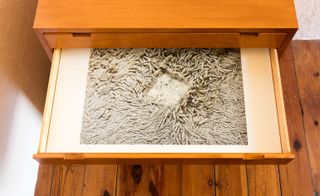
Bonillas has taken it upon himself to reproduce various historical art works, repurpose objects and contemporary pieces, and make new photo abstractions and embed them into the cubbies, cabinets, and curios throughout the house. Pictured: Huellas (series), 2016
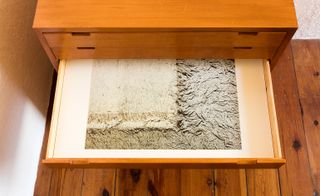
The library hides a series of photograms (inside the chest of drawers, inside a closet) made from objects lying around the house. Pictured: Huellas (series), 2016

Huellas (series), 2016
INFORMATION
For more information, visit the Casa Luis Barragán website
courtesy the artist,and Estancia FEMSA, Mexico City, 2016
ADDRESS
Casa Luis Barragán
General Francisco Ramírez 12–14
Miguel Hidalgo
Ampliación Daniel Garza
11840 Mexico City
Wallpaper* Newsletter
Receive our daily digest of inspiration, escapism and design stories from around the world direct to your inbox
-
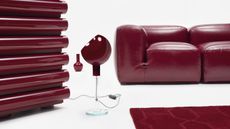 Gucci’s ‘Design Ancora’ reimagines furniture classics in rich red
Gucci’s ‘Design Ancora’ reimagines furniture classics in rich redGucci launches new editions of Italian design icons in an alluring deep red, showcased during Milan Design Week 2024
By Simon Mills Published
-
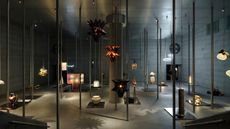 Loewe’s Jonathan Anderson drafts artists to create 24 extraordinary lamps at Milan Design Week 2024
Loewe’s Jonathan Anderson drafts artists to create 24 extraordinary lamps at Milan Design Week 2024Loewe creative director Jonathan Anderson commissioned international artists and artisans to explore ‘illumination within the house’ with a series of lamps and lighting installations, shown at a group exhibition at Milan Design Week 2024
By Scarlett Conlon Published
-
 What are polynucleotides? Trying the skin injectable made from salmon sperm
What are polynucleotides? Trying the skin injectable made from salmon spermPolynucleotides are the latest in skin injectables, containing DNA derived from the gonads of salmon. Wallpaper* Beauty & Grooming Editor Hannah Tindle tries them to discover exactly how they work
By Hannah Tindle Published
-
 Tanya Aguiñiga: the artist weaving new narratives for borderless creativity
Tanya Aguiñiga: the artist weaving new narratives for borderless creativityWe profile LA-based artist and Loewe Foundation Craft Prize finalist Tanya Aguiñiga, whose work explores life on the US-Mexico border and seeks to empower transnational voices
By Harriet Lloyd-Smith Published
-
 Bosco Sodi’s monumental new Mexico City studio is a multifunctional feat
Bosco Sodi’s monumental new Mexico City studio is a multifunctional featAs Bosco Sodi unveils his new Studio CMDX in Atlampa, Mexico City, we speak to the artist about how the vast Alberto Kalach-designed former warehouse is a feat in multitasking
By Juliana Piskorz Published
-
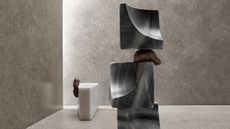 Artist’s Palate: Jose Dávila’s chocolate fudge with pecans
Artist’s Palate: Jose Dávila’s chocolate fudge with pecansTry Jose Dávila’s indulgent recipe for chocolate fudge with pecans, from our December 2022 issue’s Artist’s Palate feature, a Wallpaper* homage to our favourite contemporary art
By TF Chan Published
-
 Mexico City art hub JO-HS opens inside a modernist icon
Mexico City art hub JO-HS opens inside a modernist iconNew exhibition space and creative hub JO-HS opens inside a striking example of modernist Mexico City architecture by Carlos Herrera
By Harriet Lloyd-Smith Last updated
-
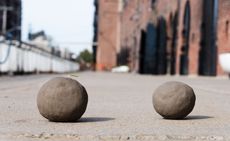 Bosco Sodi’s message of post-pandemic hope in New York City
Bosco Sodi’s message of post-pandemic hope in New York CityThe Mexican artist takes over Manhattan's Washington Square Park on Sunday 23 May, giving away 439 small clay spheres embedded with seeds to spread a message of hope
By TF Chan Published
-
 Unno gallery shines a spotlight on Latin American design talent
Unno gallery shines a spotlight on Latin American design talentOffering a new point of view on the region's talent, Milan-based digital gallery Unno makes its debut with a series of collectible design objects that reference ancient aesthetics with a contemporary spin
By Rosa Bertoli Last updated
-
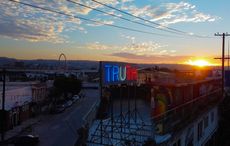 Artist Stefan Brüggemann lights up the truth in Tijuana
Artist Stefan Brüggemann lights up the truth in TijuanaMexican artist Stefan Brüggemann meditates on the state of misinformation with a double-sided neon installation on the US/Mexico border
By TF Chan Last updated
-
 Bosco Sodi creates limited-edition cover for Wallpaper’s December 2020 issue
Bosco Sodi creates limited-edition cover for Wallpaper’s December 2020 issueFor our December 2020 issue, artist Bosco Sodi explored notions of perfection by contrasting his clay sculptures with the concrete forms of his Casa Wabi art foundation
By TF Chan Published